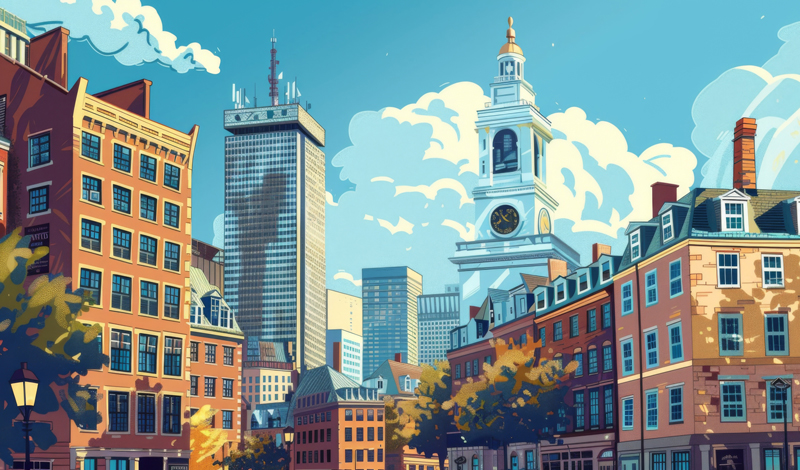The 1990s were marked by Ikeda Sensei’s wide-ranging efforts to spread the principles of Buddhist humanism around the world, as he held dialogues with key scholars and leaders such as Rosa Parks and Norman Cousins, and lectured at such educational institutions as Harvard and Columbia.
What would later be deemed a Soka renaissance took flight around the time of the SGI’s spiritual independence from the authoritarian and corrupt Nichiren Shoshu priesthood, which in November 1991 excommunicated over 10 million lay practitioners of the SGI in an attempt to wrest control of the membership and its resources.
It was against this background that the members of Boston welcomed Sensei to their city, in September 1991, just two months prior to the SGI’s excommunication, and again in September 1993, soon after the split.
During the latter visit, Sensei delivered his second Harvard address, “Mahayana Buddhism and Twenty-First-Century Civilization,” and established the Boston Research Center (now the Ikeda Center for Peace, Learning, and Dialogue). His visits would not only shape the lives of the members but also mark the departure of a new age for the Soka Gakkai as a world religion.
The Living Buddhism chronicles Sensei’s 1993 visit to Boston through the recollections and reflections of the members who were there.
On September 20, 1993, Ikeda Sensei and Mrs. Ikeda arrived in Boston, “a world capital of intellect,”[1] on the second leg of their U.S. trip, spending seven days there before departing for Canada. This was his second visit to the city in two years, and he presented a poem to the members upon his arrival:
Your sincere hearts shining
I returned to Boston with joy
to make history in kosen-rufu.[2]
The following day, 70 representative members joined Sensei for the Third SGI-USA Executive Conference, during which he referred to the Boston members as “kings and queens of humanity”[3] and announced the SGI’s decision to confer the Nichikan Gohonzon upon members around the world.[4] Emphasizing the true essence of faith in Nichiren Buddhism, he explained the benefit of embracing and believing in the Gohonzon.
Tufts Recognizes Sensei’s Contributions to Peace
On September 22, Sensei and Mrs. Ikeda visited the home of John D. Montgomery, professor at the Harvard University John F. Kennedy School of Government and director of the Pacific Basin Research Center at Soka University of America.[5] The two exchanged views on how to strengthen the functions of the United Nations, and Mr. Montgomery expressed his determination to continue supporting the SGI and the Pacific Basin Research Center in their lofty missions.
Sensei then traveled to Tufts University in Medford, Massachusetts, where the Department of Religion presented him with a citation for outstanding religious leadership in recognition of his contributions to peace and culture. He was the first such recipient of this commendation from the university.
As an expression of his appreciation, Sensei donated 145 books to the university’s history library, including the complete works of Indian poet and philosopher Rabindranath Tagore.[6]
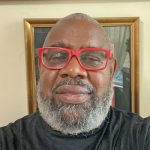
John Smith (Boston): In both 1991 and 1993, I was a young men’s division member and part of Sensei’s security team. On his first visit, I was moved by his care for my life. One day, while I was standing outside in the rain, Sensei asked one of his staff members to check in on me and encourage me. Although I was there to protect him, he was protecting me.
For me, his second visit was about what I needed to learn. I remember watching how he operated. He was very lighthearted and funny outwardly but also fiercely determined and serious about the efforts he was making.
During a walk with some of the behind-the-scenes staff, we came across a big tree. Sensei told us that this tree had grown from a little seed and remarked at how magnificently it had grown. He asked us each to develop great, expansive lives like the tree. Even though he had to give his lecture at Harvard and meet with important people, he was always thinking about how to encourage those around him.
In 1993, I was 27 and unsure of what I wanted to do in life. But watching all the efforts Sensei was making, I made a determination to make something out of my life and raise successors in faith. Wherever I moved after, I did my best to support the youth. Today, I’m the executive director of a legacy organization doing community development work in Boston.
Boston members have a lot of pride in the fact that Sensei came here twice. As a region men’s leader, I’m determined to continue to raise many young people and build a multicultural, multiracial youth division that represents the incredible diversity and mission of the U.S.
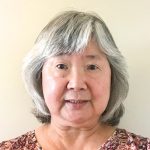
Hiroko Park (Framingham, Mass.): Sensei’s first visit to Boston came at a pivotal time for me. I got married and moved to the U.S. from Japan in 1986. By 1991, I had three boys under the age of 5. Honestly, I missed my parents and friends in Japan so much. Even though I was physically in the U.S., my heart was in Japan.
In 1991, my mother passed away, and I was devastated. Shortly after that, we found out that Sensei was coming.
I was a chapter leader and supporting the gift committee. As a chapter, we made an album for Sensei. It was nothing fancy but a collaborative effort to introduce Sensei to the members. Days after Sensei left Boston for Los Angeles, I received a call from my women’s leader that Sensei had responded to the album with a Japanese poem written inside. The poem read in part: “True beauty is a person who has a beautiful heart.”
That has become my personal guidance—to live my life with a beautiful heart and pure faith. After his 1991 visit, I decided that this is my land—the Buddha land. I’m going to do kosen-rufu in the U.S.
By 1993, we welcomed a fourth son. He suffered with asthma, and because he had a hard time getting enough oxygen, he would only sleep upright in my arms. I was getting two to three hours of sleep every night. I had been asked to be a part of the team to cook for Sensei and Mrs. Ikeda but felt it would be nearly impossible given my circumstances. I had no choice but to chant abundantly for my son to get better despite my own sleep deprivation. Within one month, his symptoms completely disappeared.
By the time Sensei’s movement started, I had so much appreciation for transforming my son’s health karma! The cooking crew was completely behind the scenes, so we didn’t have an opportunity to encounter Sensei, but I remember Mrs. Ikeda gave us a handwritten letter expressing her appreciation for our efforts to prepare their food.
Seven years ago we had a house fire, and I could only grab the Gohonzon when we fled. When we went back to try to salvage our belongings, the only two things that remained almost untouched was a box of old photos that contained cherished memories and the album with Sensei’s poem from 1991.
I feel my life has been full of love and I was always protected by all Buddhas, heavenly gods and benevolent deities, exactly as Sensei said in the poem.
Mahayana Buddhism and Its Contributions to Peace
The day before his lecture at Harvard, Sensei and Mrs. Ikeda visited the childhood home of President John F. Kennedy in Brookline, Massachusetts.
September 24, the day of his lecture, had arrived. At the invitation of Harvard’s Anthropology Department of the Faculty of Arts and Sciences and the Department of Applied Theology of the Divinity School, Sensei delivered his second lecture at the university, titled “Mahayana Buddhism and Twenty-First-Century Civilization.” He addressed an audience of more than 250, including representatives of Harvard’s faculty and student body as well as professors from nearly two dozen American institutions of higher learning, including MIT, Tufts, Brown, Cornell and Stanford.
In his speech, Sensei discussed the contributions Mahayana Buddhism can make to the peaceful evolution of society, including the Buddhist perspective of the continuity of life and death, its emphasis on dialogue, the role it can play in restoring humanity and the philosophical basis it provides for the symbiotic coexistence of all things:
The greater self of Mahayana Buddhism is another way of expressing the openness and expansiveness of character that embraces the sufferings of all people as one’s own. … Only the solidarity brought about by such natural human nobility will break down the isolation of the modern self and lead to the dawning of new hope for civilization.[7]
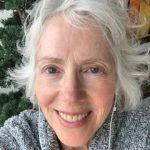
Virginia Benson (Boston): When Sensei was introduced, he began by sharing warm remarks about everyone on the panel, including John Kenneth Galbraith, who at 6 feet, 6 inches tall, stood over a foot taller than him. Sensei put his hand way up over his head and jumped. Everyone laughed. The atmosphere had been so formal, and Sensei completely broke the ice by taking himself lightly. It established a light and warm atmosphere. When I look back at the lecture, I feel as if he were displaying what it looked like to remove the “invisible arrow”[8] in our hearts to be open-minded and openhearted.
I was also struck by the way Sensei spoke about how Buddhist humanism could contribute to the evolution of peace, not that Buddhism was the only way to a peaceful society.
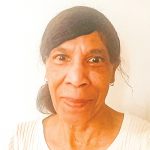
Joel Carol Bowen (Everett, Mass.): I was a newly appointed chapter leader, a single mom of two daughters and had just gotten unexpectedly promoted at my job. The thing I struggled with the most was being flexible. I was the type that had everything in my planner and had to complete everything to a T.
In 1993, I was asked to be the overall in-charge for the food committee. We had a budget to feed 300-plus people who were supporting Sensei’s movement behind the scenes. I was often overwhelmed with the many moving parts of the schedule.
On the morning of the Harvard lecture, I was suddenly asked to attend. I was at the center in sweats and a T-shirt so the thought of me going home, putting on a suit, getting in my car and finding parking at Harvard was really overwhelming. My first thought was: No, I don’t want to go. Find someone else. But then I had this wonderful member notice that I was going to have a meltdown. She walked over to me and said: “Joel, do you know how many people want to go to that lecture? This is your opportunity to share the benefit with all of the food committee members. We can take care of this.” She softly pulled me together.
I got there on time and sat in the fourth row. I didn’t understand a word Sensei was saying, not because of the language barrier but because it was a very deep lecture. His voice was powerful but embracing. One part of the lecture really struck me. He cited a Buddhist scripture that read: “You are your own master. … When you have gained control over yourself, you have found a master of rare value.” He then spoke about what it means to live true to ourselves: “The ‘self’ referred to here, however, is not the Buddhist lesser self, caught up in the snares of egoism. Rather, it is the greater self, fused with the life of the universe through which cause and effect intertwine over the infinite reaches of space and time.”[9]
As a food committee leader and in my work as a supervisor, I was heavy handed with people. Sensei made me realize that I don’t have to command people when I speak to them. It shifted the way I treated those around me.
After Sensei’s visit, I wrote down my determination to raise successors to ensure a sound foundation for the future of the SGI and to raise people more capable than me. That visit changed everything for me.
Following the lecture, several Harvard scholars commented on and reaffirmed points from the speech: John Kenneth Galbraith, professor emeritus of Harvard University and renowned economist and U.S. ambassador to India under U.S. President John F. Kennedy; Harvey Cox, the chairman of the Department of Applied Theology at the Harvard Divinity School; and Nur Yalman, leading Turkish social anthropologist and chairman of the university’s Anthropology department.
Mr. Yalman referring to the Nichiren Shoshu priesthood, compared the SGI’s efforts to bring about a reformation in Buddhism to the 16th-century Protestant Reformation.
The following afternoon, Sensei visited the home of Mr. Yalman, where the two discussed the importance of overcoming ethnic barriers and religious hatred through deepening bonds of friendship. He then visited Mr. Galbraith at his home and commended him on his strong sense of responsibility and concern for others. Mr. Galbraith urged Sensei to continue his dialogues for peace.
Establishment of the Ikeda Center
On the same day, the establishment of the Boston Research Center for the Twenty-
First Century was announced, with Virginia Benson appointed as the executive director. The Boston Research Center—which formally changed its name in 2009 to the Ikeda Center for Peace, Learning, and Dialogue—has since built a network of scholars and established peacebuilders who bring their knowledge and values directly into dialogue with Sensei’s Buddhist humanism. It has also developed a network of young people who engage directly with the founder’s vision and with one another to create fresh cultures of peace.[10]
Virginia Benson: Early in my Buddhist practice, I was given several of Sensei’s dialogue books, and they helped me understand what compassionate policy could be. In 1986, I started a public policy think tank with the hope of bringing together humanistic ideas that could inform compassionate government policies. I struggled, however, to feel like I was making a difference.
In 1992, I had the opportunity to meet Sensei directly during a culture department training course in Japan. I told Sensei that I really loved his dialogues with scholars and asked if I could help him in any way. He expressed his appreciation for my support of his mission on the world stage, but he told me that I had a unique mission that only I could fulfill and asked me to become a shining sun in my own field.
I went back with Sensei’s belief in me and belief in myself and determined to become a brilliant sun in my field. I experienced significant breakthroughs. Six months later, Sensei founded the Boston Research Center, and I was asked to become its executive director.
Right before the New England Renaissance Conference, Sensei met with the new center’s small staff. He likened our endeavor to that of the Mississippi River, which started with a single drop. In the same way, he said, this center was starting with a single drop, but, he assured us, as we steadily developed it, one day it would become a great river. It was just the thing I needed to hear—that it was a gradual effort—because I was feeling in a bit of a panic over the immense responsibility.
In 1994, I reported to Sensei that we started publishing our dialogues with Harvard scholars. We had grown into a small stream. He made it clear to me that the Mississippi River guidance wasn’t so much about the center’s activities as it was about my human revolution. The river expands based on my human revolution, and well-known scholars all over the world would come to know the center because of my growth.
In 1996, we had an incredible opportunity as center staff to travel to an SGI training center with Sensei. He asked me to give a medal to the head of the cleaning crew for their new center, wanting to recognize him for his efforts. Sensei then turned to me and said to never forget that people such as he were nobler than any great academic. This was an important lesson for me.
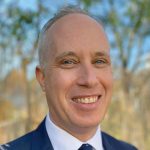
Kevin Maher (Belmont, Mass.): I was first introduced to Buddhism by my younger sister in 1999 when I was 25 years old. I was looking for a way to transform the grief and anxiety I was grappling with after the sudden loss of my mother when I was 20.
My parents were in their 20s during the Vietnam War era. This experience informed the way they came to embrace peace, and so I had a passion for it as well. In my second year of Buddhist practice, a temporary position opened at the Ikeda Center. I applied and was hired 10 months after 9/11. Mainstream news was clamoring about retaliation and war, so my first assignment was to find articles that shared an alternate vision, Sensei’s vision, grounded in hope, dialogue and peace. We then shared these perspectives with the Ikeda Center network. Within a short period of time, I became a full-time staff member, and I’ve been there ever since. Since 2021, I’ve had the honor of supporting the center as its executive director.
Sensei formally established the center as a tangible commitment to the spirit behind his second lecture at Harvard. We consider September 24, the date of that lecture, the founding date of the center. In a message he sent to us in 1995, Sensei presented a clear and inspiring vision for why he established the center, writing: “The objectives of the Boston Center go beyond the simple pursuit of knowledge. It was established within the context of a vaster human project: to find out the ideas that can bring hope and happiness to people in the coming century, to seek routes to a world of peace and coexistence. Despite the present modest scale of the center, I am confident of the gravity of its mission.”[11]
Boston is uniquely positioned as an intellectual hub. The city attracts some of the brightest minds in the world, including students, university professors, administrators and leaders of various institutions. Many of these individuals will take their experiences and insights from Boston back to their home countries, which really amplifies the city’s global influence. Additionally, Boston buzzes with energy from its vibrant youth population that can surpass 300,000 students during the school year, drawn from over 40 institutions of higher learning. I find Sensei’s vision to establish a center dedicated to fostering a network of scholars, peacebuilders and youth within this intellectual hub truly remarkable.
When we look at the world situation in the early 1990s, at the time of Sensei’s Harvard speech, we see striking similarities to today’s climate of conflict and division. Sensei acknowledged these challenges right at the outset of his lecture, offering a hopeful vision for a future filled with possibility and peace. In fact, the key messages he conveyed are as vital today as they were 30 years ago.
Bring ‘Joy, Harmony and Happiness to the World’
The SGI-USA New England Renaissance Conference was held on the afternoon of September 26 at the Boston Sheraton Hotel. Six hundred members from Boston, New York, Philadelphia and Washington, D.C., convened for the meeting, joined by SGI representatives from Panama, Peru, Korea, Hong Kong and Japan.
Part two of the conference began with spirited performances, first from Boston future division members singing Whitney Houston’s “Greatest Love of All,” followed by the American Renaissance Chorus—named by Sensei in 1991—singing “Let the River Run.” In the final performance, a young women’s division chorus performed to “Get On Your Feet,” featuring a rap artist. To the delight of the audience, Sensei joined in by rapping from his seat, bringing everyone to their feet.
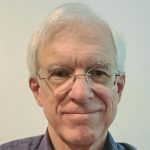
Rick Wilson (Avon, Connecticut): I was introduced to Buddhism in 1969 after my freshman year at Harvard. I was dealing with a lot of unprocessed pain and anger and really suffering. As I started practicing, my life started to move, and a joy I hadn’t experienced in years—or maybe ever— exploded in my life. I eventually graduated from Harvard and then went on to get a master’s degree in orchestral conducting at the New England Conservatory in Boston.
Welcoming Sensei to my alma mater was profoundly gratifying. Although I was unable to attend the lecture, I have since studied that lecture deeply many times.
In 1993, as in 1991, I was the conductor for the chorus. At one point, we had a rapper perform and Sensei rapped together with him from his seat, in perfect rhythm. It reflected Sensei’s spirit to be informal and fun, and put people at ease.
The chorus was made up of members from the Boston area and Connecticut. We were determined to do the absolute best we could as the American Renaissance Chorus, a name Sensei had given us in 1991. And we did!
The experience of supporting Sensei’s movement has helped me create lifelong fortune. In 1975, I got married. My wife and I have a wonderful daughter and son. And after a decade working in music, I changed careers into the tech world.
Since retiring in 2016, I have returned to what I love most—making music. This summer I had the fortune to attend a vocal master class in Italy, also putting on a successful solo recital there. Year round I sing with the Hartford Chorale, a group that performs regularly with the Hartford Symphony and other orchestras. As a way of contributing to my community, I also serve as a board member there.
In the last 10 years especially, I’ve tried to be more serious about understanding and living the oneness of mentor and disciple. It is a fact that the world feels a little different to me, a little sadder, since Sensei’s passing. But I’m asking myself what he would have wanted me to do, and I’m quite sure that simply feeling sad is not the answer. What I understand about the true spirit of the mentor and disciple relationship is that it is deep and empowering, a source of energy, joy and conviction in continually challenging myself to fulfill my unique mission in this world. I feel profoundly grateful to have encountered a mentor like Sensei in this lifetime.
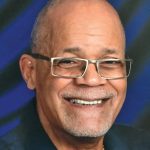
Jim Hill (Boston): I was supporting Sensei’s movement as a driver, as I had done in 1991. As someone supporting behind the scenes, we usually didn’t attend the meetings or take part in the activities, but at the last minute they came and got 10 or 11 of the drivers to attend the SGI-USA New England Renaissance Conference. I remember there was a performance—a joyful song where a gentleman rapped. I remember Sensei started rapping spontaneously. It was an amazing experience—a feeling of incredible joy in the room. I thought, Maybe this is what it feels like to be at Eagle Peak.
During his visit, I sought guidance from a senior in faith because I felt like there wasn’t much for us old folks to do, and I felt eager to do more. In 1993, I was already 50. The youth ran the whole movement. I can’t remember the exact guidance I received, but I know the result of the guidance was that I felt that I had a unique mission, and my experiences would be essential to something or someone.
I realized shortly thereafter that the reason why I’m here at this time is to encourage others. There are people who I am uniquely equipped to encourage. Thirty-one years later, I still feel that sense of mission strongly. Our mission isn’t based on what someone else tells us to do. It’s knowing that we have a mission and that allows us to be spontaneous. The SGI gave that to me.
Isn’t it amazing that at a time when people have so much anxiety about things that are going on in this world, we all have a mission to awaken people to the power of chanting Nam-myoho-renge-kyo and elevate the life condition of the people? When I share this practice, it is my life condition that gets immediately higher. It works right away.
Following the performances, Sensei delivered his address “Bringing Joy, Harmony and Happiness to the World.”[12] In his speech, he expressed his confidence that the members would “stir up the winds of renaissance for the 21st century and spread it throughout the rest of the United States and the entire world.”[13] He then offered five guidelines for faith, bringing the members back to the essence of Nichiren Buddhism: 1) To lead a life filled with harmony and joy is the greatest happiness for human beings and is essential for true happiness; 2) Live with hope; 3) Pay attention to your daily lives. Faith manifests itself in daily life; 4) Put your health first so that you can live long, productive lives; and 5) Be people of solid character who possess rich common sense.
Sensei closed his speech by saying that Nichiren Buddhism and the SGI organization exist so that all may become happy. “Buddhism is reason; it is humanism. I hope that, with unsurpassed humanity, you will make this eastern region of the United States one that is pervaded by warmth, harmony, happiness and joy.”[14]
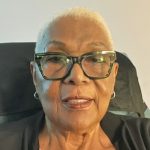
Marionette Patterson Fennell (Jamaica Plain, Mass.): I started practicing Buddhism in 1975. When Sensei visited in 1993, I held two leadership positions and was part of a communication team for Sensei’s movement. Our responsibility was to be in constant communication with the various people involved in every aspect of the movement, including the behind-the-scenes members and the meeting attendees. I was doing my best to support, but deep down I was struggling with doubt about my practice due to the priesthood issue and challenges with leadership.
If it weren’t for Sensei’s visit and his guidance during the renaissance meeting, I think I would have quit. He shared five points during that meeting that took everything back to the basics of faith. He set the blueprint for how to practice faith correctly and helped me develop my own individual practice.
I was a single mom of two sons who were 21 and 18 at the time, so Sensei’s guidance about creating harmonious families really resonated with me. Now, both of my sons sincerely practice with the SGI. One is a neurosurgeon and the other is a property manager. I also have five grandchildren who all chant and participate in SGI activities.
Sensei also emphasized the importance of showing actual proof in daily life by achieving financial security. Before he said that, I thought I couldn’t chant about money! I was struggling financially then, but over the years, I’ve achieved financial security as well, enabling me to travel to many places around the world. Sensei’s guidance was so practical and showed me that faith equals daily life.
After his visit, I made a conscious decision that no matter what anybody said or did, I was going to do kosen-rufu with Sensei for the rest of my life.
Recently I asked myself whether my goals coincided with Sensei’s vision. What does my life look like as a Bodhisattva of the Earth? My dream is that we can joyfully share Buddhism everywhere so everyone can receive benefit! I’m also determined to help people live the five points that Sensei gave so that they can gain the benefit of practicing correctly.
On September 27, the day of his departure, around 40 members gathered to see off their mentor. He expressed his deep appreciation for everyone’s efforts and support during his weeklong stay, leaving the members of Boston with one last poem:
Thank you for another great and sunny day today.
Never forgetting the sincerity of the members of Boston,
I pray for the happiness of the Soka family.
From the September 2024 Living Buddhism
References
- My Dear Friends in America, fourth edition, p. 359. ↩︎
- September 2013 Living Buddhism, p. 6. ↩︎
- MDFA, p. 332. ↩︎
- In the fall of 1993, the SGI announced that henceforth it would confer upon members woodblock print [okatagi] Gohonzon based on a Gohonzon that Nichikan, the 26th high priest, transcribed in June 1720. After the SGI’s excommunication from the corrupt and authoritarian Nichiren Shoshu priesthood, it forbade conferring the Gohonzon on SGI members in an attempt to use the object of veneration in Nichiren Buddhism as a tool of coercion. Conferring the Nichikan Gohonzon marked the start of a new era of worldwide kosen-rufu (see MDFA, pp. 306–31). ↩︎
- The Pacific Basin Research Center had been established by Sensei as the founder of SUA in 1991 to advance research leading to the peaceful development of the Asia-Pacific region. ↩︎
- See Ikeda Sensei’s acceptance speech in MDFA, pp. 341–44. ↩︎
- MDFA, p. 357. Ikeda Sensei’s full speech appears on pp. 345–57. ↩︎
- In his address, Sensei cited Shakyamuni as saying that he perceived “a single, invisible arrow piercing the hearts of the people,” describing it as a prejudicial mindset, an unreasoning emphasis on individual differences (see MDFA, p. 349). ↩︎
- MDFA, p. 356. ↩︎
- See https://www.ikedacenter.org/about/history <accessed on July 22, 2024>. ↩︎
- See https://www.ikedacenter.org/resources/daisaku-ikedas-message-1995-opening-ceremony <accessed on July 23, 2024>. ↩︎
- MDFA, pp. 358–64. ↩︎
- Ibid., p. 358. ↩︎
- Ibid., p. 364. ↩︎
You are reading {{ meterCount }} of {{ meterMax }} free premium articles

